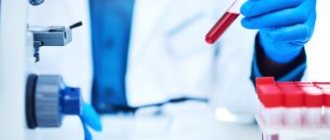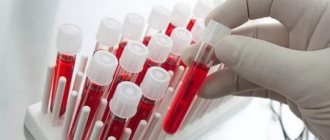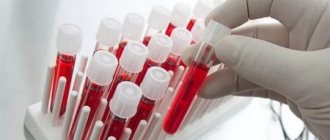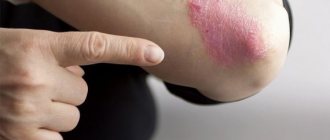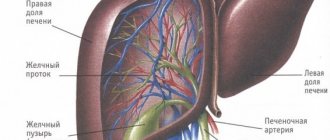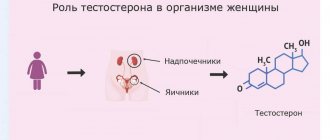Low blood testosterone levels, also known as hypogonadism or andropause, affect approximately 40% of men over the age of 45.
The incidence of hypogonadism increases with age. It has been scientifically proven that low testosterone levels are diagnosed in approximately 20% of men over 60 years of age, up to 30% of men over 70 years of age and 50% of men over 80 years of age.
What are the signs of low testosterone in men?
Sexual disorders come to the fore, including decreased erectile function, low libido (sexual desire), weak and infrequent erections and decreased sexual activity.
Hypogonadism is also characterized by an increase in body fat, decreased physical activity and increased fatigue, decreased muscle mass, nervousness and depression.
Approximately 40% of men with high blood pressure and 40% of men with high cholesterol levels have low levels of testosterone in the blood. In addition, 50% of men with diabetes and 50% of obese men also experience decreased testosterone levels. It has been proven that 30% of men with HIV and 50% of men with AIDS have reduced testosterone levels.
Surprisingly, almost 75% of men with a history of chronic opioid use experience hypogonadism.
Testosterone deficiency and somatic pathology
Testosterone is the main sex hormone that determines the functioning of the male body. Together with dihydrotestosterone, androstenedione and their metabolites, testosterone creates the appropriate tone of the central nervous system, subcortical formations, centers of the autonomic nervous system, supporting the functional activity of the gonads and ensuring copulatory function.
The androgenic activity of testosterone and its active metabolite, dihydrotestosterone, is determined by their effective interaction with androgen receptors. The main place of formation and secretion of testosterone is the interstitial cells of the testicles - Leydig cells. In addition, the biosynthesis of certain, but significantly smaller amounts of this hormone can be carried out in the adrenal cortex.
Testosterone, along with androgenic effects, is capable of having a powerful anabolic effect on various human tissues (muscles, kidneys, liver, uterus), i.e., increasing protein synthesis in them. As a result of its action on target cells, a number of effects of testosterone are realized (Fig. 1).
According to the Massachusetts Male Aging Study (MMAS), total testosterone declines by 0.8% per year from age 30 to 35, and free and albumin-bound testosterone declines by 2% per year, while ABL levels decline sex hormones (SHBG), increases by 1.6% per year (J Clin Endocrinol Metab, 2002).
In the clinical picture of androgen deficiency, several groups of symptoms can be distinguished.
- Vegetative-vascular:
- hot flashes,– increased sweating,
- heartbeat,
– cardialgia.
- Endocrine disorders:
– obesity,– enlargement of the mammary glands,
– reduction of facial hair.
- Musculoskeletal:
– decrease in muscle mass,– increase in muscle mass inadequate to physical activity,
– bone pain.
- Psycho-emotional:
- fast fatiguability,– mood lability with a tendency to depression,
– memory impairment,
– decreased creative productivity,
– sleep disorder.
- Trophic disorders:
– dry skin,– appearance of wrinkles.
- Genitourinary:
– frequent urination,– accelerated ejaculation,
– erectile dysfunction.
Changes in neuro-emotional status are manifested by increased irritability, decreased ability to concentrate, as well as cognitive functions, creative productivity, and memory functions; depression, sleep disturbances, a feeling of decreased vital energy. Since testosterone is the main anabolic hormone, its deficiency leads to the development of somatic disorders: a decrease in muscle mass and strength, an increase in the amount of adipose tissue, the development of osteoporosis, and a decrease in skin tone and thickness.
Vegetative-vascular disorders considered the “prerogative” of female menopause—hot flashes, sweating, cardialgia, fluctuations in blood pressure, a feeling of lack of air—also worry men during the development of age-related hypogonadism syndrome.
Testosterone plays a major role in the development of sexual function and the formation of sexual behavior, so a decrease in its level is accompanied by a decrease in libido and erectile dysfunction.
Today, most experts have no doubt about both the very existence of androgen deficiency syndrome (or age-related hypogonadism) in men and the need for its correction. Every year more and more testosterone preparations appear on the pharmaceutical market. But it was not always so.
The search for the “elixir of life,” which lasted several centuries, was marked by the greatest discovery of the structure of testosterone in the mid-30s of the last century. In 1934, Yugoslav chemist Leopold Ruzicka and colleagues from the Federal Institute (Zurich) partially synthesized androsterone and testosterone. Another scientist, Adolf Butenandt, one of Ruzicka's main rivals in the field of sex hormone chemistry, submitted a description of the process of producing testosterone from cholesterol and the structure of testosterone itself to the German Journal of Physiological Chemistry in August 1935 (FJ Butenandt et al., 1935).
A week later, Ruzicka reported to a Swiss chemical journal that he had received a patent for a method for producing testosterone from cholesterol (L. Ruzichka et al., 1935).
Since then, a new era in the treatment of testosterone deficiency has begun.
Within 2 years from the discovery of testosterone, several of its preparations appeared in clinical practice, but it soon became clear that due to poor solubility in water, they cannot be absorbed when taken orally in their pure form. Therefore, after some time, testosterone propionate was synthesized and became widely used. Thus, in 1940, HB Thomas and RT Hill reported the successful treatment of male menopause with testosterone propionate (HB Thomas, RT Hill, 1940). Studies conducted during the period 1930 - 1940 showed that testosterone has a beneficial effect on the condition of the male body as a whole.
Due to the obvious effectiveness of the use of testosterone drugs since 1940, many doctors began to recognize the presence of a number of symptoms similar to those of female menopause in middle-aged men.
In 1944, Carl J. Heller and Gordon B. Myers published an article in the Journal of the American Medical Association, “Menopause in Men: Its Symptoms, Diagnosis, and Treatment,” in which they showed that the activity of human chorionic gonadotropin in men with menopausal disorders is significantly higher than in healthy people; At the same time, it was possible to demonstrate the effectiveness of injections of testosterone propionate: in 85% of patients, complete disappearance of vasomotor, mental and urological symptoms was noted, as well as complete restoration of libido (CG Heller, GB Myers, 1944).
Since the duration of action of testosterone propionate was about 3 days, a successful attempt was made to manufacture cylindrical capsules from compressed testosterone crystals, which were implanted under the skin of the buttocks or abdomen. In 1953, German physician Tiberius Reiter demonstrated the effective use of testosterone implants; at the same time, he was the first to measure testosterone levels before starting treatment and showed the safety of testosterone in relation to the effect on the cardiovascular system and prostate (Tiberius Reiter // Practicioner. 1953).
However, the triumphant march of testosterone therapy in the 1950s ran into a wall of misunderstanding among a large number of both scientists and health care leaders. In particular, the successful use of testosterone injections by Danish doctors Moller and Tverdegaard in patients with intermittent claudication, which literally saved many from gangrene, caused a strong reaction from officials from the Danish Health Service. In 1957, an official charge was brought forward for treason against the government, since testosterone preparations were not only not included in the list of vital drugs, but were also not compatible with the concepts of traditional medicine of the time. The works of scientists were not allowed to be published and were not discussed at congresses (M. Carruthers, 2004).
As mentioned above, at present, the problem of prescribing testosterone drugs for age-related hypogonadism is considered practically solved, but it is often solved only among narrow specialists - urologists, andrologists, endocrinologists. At the same time, the vast majority of men in the so-called transitional age have at least one somatic disease. Thus, according to the pathological service of medical institutions in Moscow, the frequency of deaths in 2003 among men with two or more diseases ranged from 31% in the age group of 41–50 years to 62% in the age category from 71 to 80 years.
Somatic pathology (atherosclerosis, obesity, diabetes mellitus, liver disease) makes a significant contribution to both the decrease in testosterone secretion and its metabolism. Unlike healthy men, the level of testosterone in the blood of men suffering from these diseases is significantly lower at the same age (D. Handelsman, 1994; G. Lunglmayr, 1997).
Cardiovascular pathology today occupies a leading place among the causes of morbidity and mortality in developed countries. At the same time, the prevalence of cardiovascular diseases among men is higher than among women, and the mortality rate among men is also significantly higher than that among women, especially at a young age. Thus, in The Rancho Bernardo Study, mortality rates in the age category of 50–59 years were 10.4% in men and only 1.2% in women, in the age group of 60–69 years - 27.8% and 19%, respectively, among men and women, and only in older people (70–79 years old), cardiovascular mortality rates among women were somewhat closer to those in men - 39.1% and 47.6%, respectively (D. Goodman-Gruen and E. Barrett-Connor , 1996).
Thus, there is an interrelation between gender, hormonal status and the development of cardiovascular pathology (Fig. 2).
Arterial hypertension is an independent risk factor for coronary heart disease, and although today standards for pharmacotherapy of this disease have been developed, in practice both doctors and patients are often faced with the ineffectiveness of antihypertensive drugs and their combinations. A possible explanation for this may be uncorrected androgen deficiency. To prove the above, we can cite the fact that back in 1930, our researchers showed that arterial hypertension more often develops in men with decreased sexual function (S.I. Karchikyan, 1930), and testosterone treatment has a pronounced hypotensive effect (T.T Glukhenky, 1946).
At the same time, the first reports appeared about the positive effect of testosterone treatment on the course of angina in men, which manifested itself in a decrease in the severity of symptoms of the disease and an increase in tolerance to physical activity (TC Walker et al., 1942). The anti-ischemic effect of testosterone was shown by MD Jaffe in 1977, and later (SZ Wu, XZ Weng, 1993) during treatment, a decrease in the degree of ST segment depression on the ECG was revealed.
The overwhelming majority of cross-sectional studies conducted in the second half of the 20th century demonstrated a negative correlation between testosterone levels and cardiovascular pathology.
In particular, it was possible to obtain a correlation between the level of free testosterone and the degree of occlusion of the coronary arteries: the lower the testosterone level, the greater the degree of occlusion (GB Phillips et al., 1994).
The South Yorkshire Study (2003) showed a high prevalence of hypogonadism in men with coronary heart disease - 23.4%, while the presence of atherosclerosis was verified using angiography. This study also revealed a positive correlation between the presence of hypogonadism and arterial hypertension.
Over the past 25 years, a number of studies have been conducted, some of which have demonstrated an association between serum testosterone levels and lipid profiles.
Most studies show a positive correlation between testosterone levels and high-density lipoproteins (HDL) and a negative correlation between serum levels of total cholesterol, low-density lipoproteins (LDL) and testosterone (Nordoy, 1979; Gutai, 1981; Heller, 1983; Freedman, 1991; Pottelbergh, 2003). At the same time, some studies demonstrate a positive effect of testosterone therapy on the lipid spectrum. Thus, the work of S. Zgliczynski et al (1996) revealed a significant decrease in total cholesterol and LDL during treatment with testosterone enanthate 200 mg every 2 weeks for a year (Fig. 3).
Results from a study of 22 men with acute myocardial infarction suggest that exogenous testosterone therapy may reduce mortality rates from myocardial infarction.
The dynamics of testosterone, estradiol and insulin levels within 6 days after the onset of myocardial infarction indicate that low baseline testosterone levels are associated with an insufficient insulin response, as well as a worse prognosis in non-diabetic patients with myocardial infarction (Peter J. Pugh, 2001).
In the participants of this study, the average plasma testosterone level fell sharply during the first 2 days after the development of myocardial infarction, then increased and by the 6th day exceeded the initial values.
In 2004, in the journal Heart, the same authors published the results of a placebo-controlled study on the effectiveness of a mixture of testosterone esters (Sustanon) in men with heart failure. After 12 weeks of therapy, the intervention group achieved significantly better exercise tolerance (R. Pugh, D. Jones, 2004).
Kevin S. Channer and colleagues (Royal Hallamshire Hospital, Sheffield) conducted a small placebo-controlled trial in which men with stable chronic heart failure received testosterone 60 mg/day.
Compared with placebo, testosterone resulted in a significant increase in cardiac output (p < 0.0001); the peak of this effect was observed 3 hours after taking the hormone. The increase in cardiac output was accompanied by a decrease in afterload on the left ventricle. Testosterone had no effect on other hemodynamic parameters (European Heart Journal, 2003).
The relationship between the severity of bronchopulmonary pathology and hormonal status, as well as the effect of drug therapy on it, is practically not discussed in the domestic literature. At the same time, the results of several studies on this issue were published in foreign sources. Back in 1969, Kerrebijnland et al noted a significant increase in peak expiratory flow in patients with hormone-dependent bronchial asthma using ethylestrenol (0.1 mg/kg/day) compared with placebo.
U. Aasebo et al (1993) noted an increase in the level of total and free testosterone, a decrease in SHBG, and an improvement in sexual function during oxygen therapy in patients with chronic obstructive pulmonary disease (COPD) with severe hypoxia and erectile dysfunction (J. Steroid Biochem Mol Biol, 1993 ).
A study by Schols et al (1995) noted a significant increase in lean body mass and respiratory muscle strength in men with bronchiectasis during treatment with nandrolone decanoate at a dose of 50 mg every 2 weeks and enhanced nutrition compared with groups where placebo and/or enhanced nutrition were used .
A recent study by R. Casaburi et al (2004) found similar results: the use of testosterone enanthate 100 mg per week in combination with training (45 minutes 3 times a week) in men with COPD led to an increase in lean body mass and muscle strength.
A. Kaminschke et al (1998), when studying androgen status in men with COPD, found that 100% of patients constantly taking systemic glucocorticosteroids had reduced testosterone levels, while in patients who did not receive hormonal therapy, low testosterone levels were determined only in 45% of cases. At the same time, a dependence of testosterone concentration on the dose of glucocorticosteroids was noted, as well as worse results of the 6-minute walk test compared to the control group (J. Eur Respir, 1998).
In alcoholic cirrhosis of the liver, SHBG levels increase, and alcohol also has a toxic effect on the testicles, which aggravates hypogonadism. At the same time, the secretion of androstenedione continues in the adrenal glands. Due to liver damage, androstenedione is not excreted from the body as 17-ketosteroids, but is converted to estrogens in various tissues. A decrease in testosterone levels and an increase in estrogen levels stimulates the synthesis of SHBG. As a result, the amount of testosterone available to target cells (i.e., free and bound to albumin) is further reduced. In patients with liver cirrhosis, as a rule, fertility is significantly reduced, and oligoasthenoteratospermia is often detected. Histological examination of the testicles reveals peritubular fibrosis and atrophy of the germinal epithelium (F. Jockenhovel, 2004).
In the middle of the 20th century. A number of studies have been conducted on the use of testosterone in liver cirrhosis, the results of which are contradictory. Thus, Wells et al (1960) showed that the use of testosterone propionate 100 mg every other day for 4 weeks led to higher survival than in the placebo group. Similar results were obtained by Menden et al in 1984: with the use of 80 mg of oxandrolone daily for 30 days, a decrease in mortality was demonstrated compared with the placebo group.
In two other studies, on the contrary, the use of testosterone did not produce positive results. In a study by Fenster et al (1966), survival in a group of patients with liver cirrhosis who used testosterone propionate or methenolone acetate 100 mg every other day for a month did not differ significantly from that in the placebo group.
A three-year, prospective, double-blind study of micronized testosterone (600 mg daily) (The Copenhagen Study Group for Liver Disease, 1986) found no benefit in terms of survival, sexual function, hepatic blood flow, biochemical parameters, or differences in morphological changes. liver.
There are a number of studies proving a direct connection between androgen status and the severity of anemia in men. In particular, a study by Hamilton et al. showed that the hemoglobin level in men with surgical castration was significantly lower than in healthy patients, and the hemoglobin level did not depend on age (Hamilton et al., 1964).
Recent work also demonstrates a close relationship between hemoglobin concentration and testosterone levels. Thus, L. Ferrucci et al (2005) in a study of 905 patients over 65 years of age (exclusion criteria: cancer, chronic renal failure, taking drugs that affect hemoglobin levels) found that the hemoglobin level correlated with the level of free testosterone in both men, and in women, in addition, it was shown that with low testosterone levels, the three-year risk of developing anemia is higher than with normal levels (in men - 7.8 times, in women - 4.1).
Back in 1967, Vicher et al showed that androgen therapy improves the response to iron supplementation in iron deficiency anemia. The survival rate among patients with aplastic anemia using testosterone therapy in the study by Camitta et al (1979) was 70%, while in patients with bone marrow transplantation it was only 30%.
Similar results were obtained in a study by the French Cooperative Group (1986): treatment with norethandrolone or fluoxymesterone 1 mg/kg/day significantly increased survival in aplastic and refractory anemia. Higher efficacy of blood transfusions in patients with aplastic anemia treated with oxymesterone compared with standard therapy plus placebo was noted in a study by Bacigalupo et al (1993).
Two other authors have demonstrated that androgen therapy increases the effectiveness of erythropoietin in patients with chronic renal failure (Palacio et al., 1983; Wuet et al., 1991).
Thus, summing up the above, we can conclude that there is a close relationship between somatic pathology, its severity and androgen status in men. In addition, correction of hypogonadism with the help of testosterone drugs can reduce the severity of symptoms of the underlying disease, improve the quality of life, and in some cases affect its duration.
Currently, there is a fairly wide range of testosterone preparations for replacement therapy of hypogonadism. This list includes oral forms, oil solutions for intramuscular injections, as well as transdermal gels and patches. Since all testosterone preparations have their own advantages and disadvantages, when choosing a method of hormonal therapy, it is necessary to be guided by the principles of effectiveness, safety and ease of use.
Until now, injectable forms of testosterone esters are the most popular in many countries, which include:
- testosterone propionate and phenylpropionate,
- testosterone capronate (decanoate) and isocapronate,
- testosterone enanthate,
- testosterone cypionate,
- testosterone undecanoate,
- testosterone bicyclate,
- combination of testosterone esters,
- testosterone microspheres.
In recent years, preparations for transdermal use have been developed. These include testosterone and dihydrotestosterone gels, as well as patches. Testosterone can be used in the form of crystalline implants injected under the skin, which provide uniform release of the hormone over 6 months.
In our country, combination drugs for intramuscular administration are currently registered, containing a mixture of testosterone esters capronate, isocapronate, propionate and phenylpropionate, which are characterized by different pharmacokinetics, which ensures prolongation of the drug's action. Testosterone propionate begins to act quickly, but by the end of the first day its effect is practically reduced to zero, phenylpropionate and isocapronate begin to act in about a day, the effect lasts up to 2 weeks, and the longest-acting one - capronate - “works” up to 3-4 weeks. Significant disadvantages of these drugs are fluctuations in the concentration of testosterone in the blood from supra- to subphysiological, which is felt by a number of patients, as well as the need for frequent injections.
Today, a promising drug for hormone replacement therapy of androgen deficiency is the new drug testosterone undecanoate.
Nebido is a slow-release drug, so it can be used by injection only 4 times a year. Since after injections of the drug, testosterone levels are maintained within physiological limits for 12 weeks, without pathological increases or decreases, this treatment regimen provides a significant advantage over other treatment regimens that require an average of 22 injections per year. Important advantages for the patient are the rapid onset of effect and the duration of action of the drug, which allows one to avoid frequent visits to the doctor.
Clinical studies of testosterone undecanoate have demonstrated its high effectiveness.
As a result of its use, there is a significant increase in muscle mass and strength, a decrease in the amount of adipose tissue, an increase in sexual desire and an improvement in erectile function (J. Bresink, 2003; D. Rouskova, 2002).
Such drugs may become the “gold standard” of hormone replacement therapy, as they can eliminate androgen deficiency, the “weak link” of cardiovascular pathology.
A. L. Vertkin, Doctor of Medical Sciences, Professor L. Yu. Morgunov, Candidate of Medical Sciences E. N. Arinina E. S. Kolosova MGMSU, Moscow
Treatment options for men with a similar situation?
There are many treatment options and regimens for patients with low testosterone levels. Testosterone replacement therapy can be given as a gel applied to the skin, intramuscular injection, long-acting granules, patches or tablets. The most common option is skin gel therapy, which is used in approximately 70% of patients. Men simply rub the gel onto their shoulders or stomach after showering. Approximately 20% of patients use testosterone injections and 10% of men use testosterone patches. a small percentage of patients (about 3%) use testosterone in the form of tablets or implantable testosterone pellets.
Men's health center in Kirov
You can get a consultation with a urologist and urologist-andrologist in Kirov at the NAEDINE Clinic. The clinic has technologies, equipment and personnel to successfully identify and solve problems of the male reproductive system:
- ultrasound examination, including transrectal ultrasound (TRUS);
- laboratory diagnostics, incl. PCR, ELISA, hormones, biochemistry, andoflor;
- radio wave surgery and other minimally invasive methods;
- highly qualified urologists and andrologists with extensive clinical experience.
- 5 programs for diagnosing men's health
Make an appointment with a urologist by phone in Kirov: (8332) 32-7777 or through the form on the website
What to expect from treatment?
Testosterone replacement therapy significantly increases physical activity, libido (sex drive), muscle mass, and helps normalize sleep and erection. The level of endurance increases, irritability and depression disappear, mood and general condition of the body improve. Testosterone promotes weight loss.
There is scientific evidence of the positive effects of testosterone on increasing bone mineral density and reducing the risk of bone fractures. It is important to understand that testosterone treatment is considered a lifelong therapy, as is the case with many other chronic diseases. Stopping replacement therapy will result in a decrease in testosterone levels in the blood.
About the causes of hormonal imbalance
In young men, the causes of hormonal disorders are associated with the following factors:
- The functioning of the thyroid gland, pituitary gland, testicles or other glands responsible for the production of hormones is disrupted. Failures can be caused by congenital pathologies or acquired anomalies.
- The gonads stopped producing hormones normally due to bruises, tumor processes, and exposure to infectious pathogens.
- Toxic effects of aggressive liquids, household chemicals and cosmetics.
- Antisocial lifestyle, alcohol or drug addiction, heavy smoking.
In older men, the main causes of androgen deficiency lie in the fact that the function of the gonads decreases, as a result of which less testosterone is produced. At the same time, the amount of estrogens (female hormones) increases and obesity develops. A vicious circle is formed when a decrease in androgens leads to obesity, which increases the synthesis of leptin (the hormone of adipose tissue), which further inhibits the synthesis of testosterone.
Note! Drinking large amounts of beer often leads to hormonal imbalances.
Regardless of age, disruption of hormone production may be associated with the following factors:
- poor physical activity;
- cardiovascular diseases;
- kidney pathologies;
- elevated cholesterol and glucose levels;
- poor nutrition;
- obesity;
- frequent stress, insomnia, chronic fatigue;
- overheating of the testicles (including with cryptorchidism).
FAQ:
How to determine a decrease in testosterone? Low testosterone levels are diagnosed using a blood test. The main clinical manifestations are: decreased erection, decreased sexual desire, increased fatigue, irritability, depression, and steady increase in body weight. You should check your PSA level (a screening test for prostate cancer) and hematocrit (a measurement of the concentration of red blood cells in the blood). The PSA is tested to make sure the patient does not have prostate cancer. And hematocrit to control a possible increase in the number of red blood cells.
What important information should you know when using testosterone? Testosterone should not be taken if you have a diagnosis of breast cancer or known or suspected prostate cancer. Men undergoing testosterone treatment may be at increased risk of developing or worsening urinary (benign prostatic hyperplasia or adenoma) symptoms.
Patients with kidney, liver, or heart disease are at increased risk of developing edema. Testosterone replacement therapy can lead to worsening sleep apnea. Finally, long-term testosterone treatment may affect male fertility.
Is there a relationship between testosterone and prostate cancer? This is the most common question among patients. Studies conducted so far have not found evidence of a greater risk of prostate cancer among men who receive testosterone compared to men who receive placebo or no treatment at all. However, this remains a question that requires further research.
Modern diagnostics
To identify a hormonal deficiency of male hormones, the attending andrologist or endocrinologist carefully collects anamnesis. Pays attention to the general state of health, assesses the state of memory, ability to concentrate, etc. To detect pathologies of the endocrine system, the patient is referred for an ultrasound scan of the prostate, pituitary gland, and thyroid gland. The level of total testosterone, the concentration of TSH, estradiol, prolactin, SHBG and other hormones are checked in the blood.
In men, the condition of the cardiovascular system is checked - the lipid profile is assessed, an ECG and ultrasound of the blood vessels are performed. To detect pathology of the musculoskeletal system, the patient undergoes x-rays of either the bones or the spine. The diagnosis is made only after a comprehensive diagnosis has been carried out.
Testosterone treatment - what tests to do?
Patients receiving testosterone therapy are advised to have their hormone levels checked every 3-4 months during the first year of treatment. The first follow-up visit to the doctor is required in a month. The urologist will evaluate the effect of therapy and determine whether the dose of testosterone needs to be reduced or increased.
The optimal time of day to measure testosterone levels depends on the form of administration. The highest concentration of testosterone in the blood serum is observed approximately 4-8 hours after administration of the drug. When using the gel, testosterone levels are maintained at a relatively constant level, so testing time is not critical.
Men using testosterone therapy should perform the following tests (before and periodically during follow-up):
- PSA analysis;
- Ultrasound of the prostate gland;
- Rectal examination of the prostate gland - to monitor the effect of therapy on the prostate gland;
- Hematocrit and hemoglobin test - to measure the number of red blood cells.
